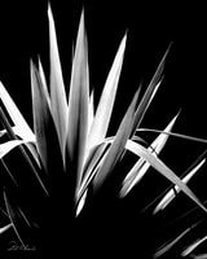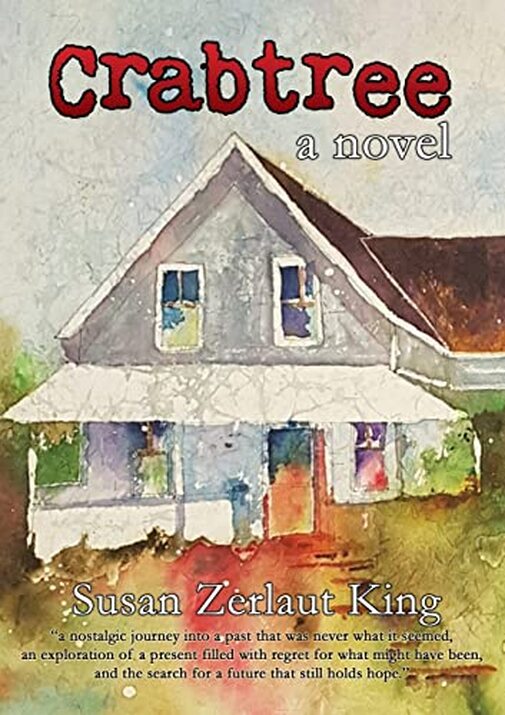|
The Fremont Area District Library is planning to host several fun and educational events in May for the whole family. These events are FREE, as always. We’re excited to announce that we are hosting some fitness classes at the library on Mondays and Wednesdays until May 25th from 12:00-1:00 p.m. Fit for Life is a functional movement class designed to move the whole body through a series of seated and standing exercises that will increase strength, muscular endurance, balance, and flexibility. Class is low impact and great for ALL levels of fitness who are interested in working on their overall health. This class will be instructed by ACSM- certified personal trainer Megan Dickinson. Megan earned her Bachelor’s degree in Exercise Science with minors in psychology and nutrition from Central Michigan University. She has been working in the fitness industry for 9 years and enjoys working with all fitness levels. Please note that class will be held May 12th instead of the 11th. Lego Saturday will be in the Children’s Department on Saturday, May 14th from 11:00-3:00 p.m. We supply the Legos, you build them! Make some fun Lego creations and we'll display them in the library! We’ll also be showing an Afternoon Movie for kids on Thursday, May 26th at 3:30 p.m. The movie title is to be determined, and will be announced at a later date. Snacks will be served, and all are welcome. Junk Journaling for ages 10 and up will take place on May 19th anytime between 3:00-5:00. This is a scrapbooking and journal hybrid. Use up what you have and supplement with found, recycled, repurposed and thrifted items. Materials provided. The Wednesday Readers Book Group will meet on Monday, May 9th at 7:00 p.m. to discuss Women of Copper Country by Mary Doria Russell, and the Daytime Book Group will meet on Thursday, May 26th at 12:30 p.m. (title TBD). Anyone is welcome to join these book groups. Books for these groups are available at the library’s front desk ahead of the meeting if you’d like to check out a copy and join the group. Other dates to note: Beginning Sunday, May 29th our summer hours will resume and we will be closed on Sundays. Also, Summer Reading kicks off on Friday, June 3rd! There will be a kickoff party for children in the Children’s Department from 1:00-3:00 p.m. All ages can sign up for Summer Reading and earn prizes. More info to come soon! For more information about any of these events, please contact the library at 231-924-3480 or visit www.fremontlibrary.net.
0 Comments
 Photo by Frederic Reinecke who will be the juror for this year's NCCA-Artsplace annual statewide competition Photo by Frederic Reinecke who will be the juror for this year's NCCA-Artsplace annual statewide competition The NCCA-Artsplace Statewide Photography Competition is an annual event with the goal of exhibiting and acknowledging some of the finest photographers in Michigan while encouraging greater growth and achievement in the photographic community. With an entry deadline of June 10, photographers across the state are shooting and printing their favorite subjects for their entries in this year’s competition. Michigan photographers, 18 years or older, are encouraged to take part in this juried competition. All photographic processes are accepted and each photographer may submit up to two pieces of work for the entry fee of $30. Members of NCCA-Artsplace may submit two pieces for a reduced entry fee of $25. All entries must be framed and ready to display. Selected works submitted to the competition will be exhibited in the NCCA-Artsplace Ray and Phyllis Jansma Exhibition Gallery June 17 through July 23. The award announcements will be held on June 18 at 10:00 a.m. Photographers awarded first, second or third place will be provided a cash prize. Honorable mention pieces will also be selected. The juror for 2022 is West Michigan photographer, Frederic Reinecke. Competition guidelines and entry forms are available at NCCA – Artsplace, 13 East Main Street, downtown Fremont or by calling 231.924.4022. The guidelines and forms may also be viewed by clicking here or go to www.ncca-artsplace.org under the "Competitions" tab. Photo and article by Donna Iverson Early spring is the time to prepare garden beds, and the first order of business is pulling weeds. After a half hour pulling quack grass, I noticed there were two other weeds in the garden bed: dead nettle and chickweed. Both are edible, nutritious, and can be used medicinally. I decided to leave them where they were growing. Both qualify as wild greens, or Horta, as the Greeks call them. They are wild herbs that grow naturally along with other edible weeds like chicory, dandelions, lambs quarters, ramps, plantain, and purslane to name a few. Dead Nettle Actually there are two kinds of nettles and both are edible: stinging nettle and dead nettle. Both names are a little off putting so I wasn’t sure I wanted to eat something called Dead Nettle. But after a little research, I decided to give it a try. A member of the mint family, dead nettle has fuzzy leaves and a square stem. Plus the purple flowers are attractive to bees and other pollinators. To be sure I wasn’t allergic, I touched a leaf to my lips to see if there was a tingle. Nothing, Then I put a leaf on my tongue with good results. As I didn’t like the fuzzy texture, I next chopped up a couple of leaves and sprinkled them inside a cheese quesadilla. It was an easy way to add wild greens to my diet. Use them like cilantro in any recipe, especially Mexican ones. As well as being edible, dead nettle is medicinal. A tea made from the leaves can help with spring allergies. To soothe bug bites, chew on a leaf and then press on the sore area. It has an anti-inflammatory effect. And if you don’t like it, feed it to the chickens. Chickweed Other than dead nettle, the other edible wild green growing in my garden bed was chickweed. Barely two inches high with tiny white flowers, it was hardly noticeable. A native of Europe, but naturalized in the US, chickweed grows year round and is one of the first wild greens to flower in the spring. A member of the carnation family, chickweed leaves and flowers can be eaten like sprouts. Add to soup, salad and stir fries, or toss it on pizza. Chickweed is easy for beginners to identify and it’s everywhere, probably in your backyard. In addition to being low to the ground, it has what looks like 10 tiny white petals. There are really only five as each one is double lobed. Chickweed doesn’t keep well, so plan to eat it the same day. And when it goes to seed, consider planting it in your kitchen herb garden. Arriving soon will be other wild greens like purslane and dandelions. Purslane is often available at farmers markets and dandelions are as close as your back door. Surprisingly, dandelion greens were recently for sale in the local supermarket. Program features info and action
I've always thought fairies are like mushrooms, you trip over them when you’re not thinking about them but they’re hard to spot when you’re searching for them- Jo Walton, Among Others For a number of reasons we at N3 World Headquarters & Pontoon Pier simply adore Howard Christensen Nature Center. Beyond their wonderful trails that serve to celebrate this appealing slice of Michigan flora and fauna, the organization provides an array of activities for families. Next on the HCNC docket is a Morel Mushroom Hunt. Yes those delectable little morsels that drive even the most sedentary of foodies out into the woods to hunt for the often elusive and frequently furtive fungi. On Saturday April 30 at 1pm the program begins with a bit of a presentation on the ins and outs of mushroom hunting to assist both beginners and those who may have already been introduced into the most popular weaponless hunting season in the state. Then it is off to the woods where participants can use their new found knowledge to stalk the mighty morel. Price? A mere fin for non members and just 3 bucks for members. Which brings us to the relative advantages of becoming a member-particularly if you have a family who love the kind of activities HCNC puts out there. To register for the Morel hunt please go to http://www.howardchristensen.org/product/morel-hunt/ The Nature Center is located at 16190 Red Pine Drive Susan Zerlaut King to provide insight into her latest offering
Live @ the Library, a series of events including author visits and writing workshops is welcoming Susan Zerlaut King to the Fremont Area District Library to present her new book, Crabtree. The author of Out of the Wilderness, a History of Sitka, Michigan, will speak about what led her to write her newest novel, Crabtree. Susan will also have books available to purchase and will be signing. In Crabtree, Patrick Crabtree and his sister Janet are faced with the task of going through their father's belongings and preparing the family farm for sale after his death. The difficult relationship they had with their father, especially after the loss of their mother, was always going to make this a painful task. What they discover in the process, however, changes everything they thought they knew about their family. The question for Patrick and Janet is whether these revelations will further drive their own lives into dysfunctionality, or whether, just perhaps, they might provide the impetus for healing. This free program will begin in the library’s Community Room on Thursday, April 28th at 7:00 p.m. Photo and article by Donna Iverson Pantone’s color of the year for 2022 is “Very Peri,” i.e. periwinkle, or lavender blue. When it comes to flowers, blue is very rare and native blue flowers even rarer. Only about 10 percent of flowers are blue. That may be part of the reason why blue is the favorite color of so many people. According to botanists, it is also the favorite color of bees. As a blue flower enthusiast, I am more and more interested in incorporating native plants into the environment. So what flowers are both blue and also native to North America? Turns out, the list of native blue flowers includes clematis (shown above), indigo, liatris, iris, aster, blue flax, lavender, salvia, columbine, lupine, bluebells, first-me-nots, lobelia, morning glory, purple coneflower and violets. The list of non-native blue flowers includes crocus, dayflower, lilacs, creeping bellflower, chicory, grape hyacinths, and ironically, periwinkle. Many of these plants are invasive, although I have always welcomed them into my garden and would not try to eradicate them. But future plantings will be native varieties. Historically, the native blue-flowered indigo plant was especially prized by ancient peoples. It was grown and traded in Asia, West Africa, the Caribbean and the Americas. A history of the color blue and the importance of the indigo plant in world history is richly explained and illustrated in a recently-published children’s book titled “Blue” by Nana Ekua Brew-Hammond and illustrated by Daniel Minter, a Caldecott honor winning artist. And finally, to pretty much negate everything you’ve just read, scientists insist that there are no such things as blue-flowered plants. They claim that blue colored flowers are the combination of the nature of our visual photoreceptors and wavelengths of light. They insist there are no true blue pigments in plants. If you want to try to unravel this mystery, read David Lee’s book “Nature’s Palette, the Science of Plant Color.” Quoting Kermit the Frog from Sesame Street, Lee says “It’s not that easy being green.” “ It’s even harder to be blue.” |
Archives
July 2024
Categories |








 RSS Feed
RSS Feed